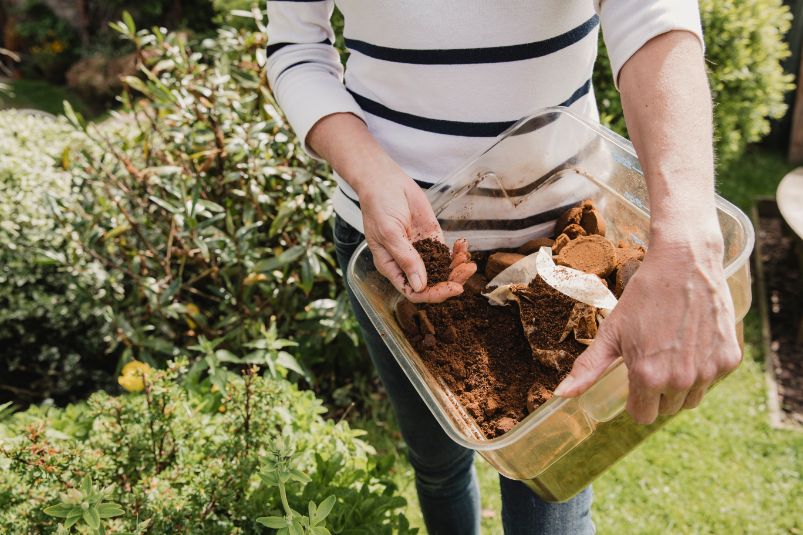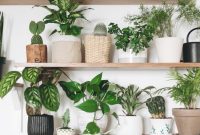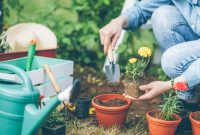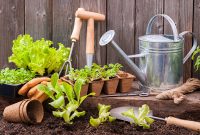People who love gardening are always looking for new ways to make their plants healthier and more vibrant. Nowadays, people are more interested in making their own fertilizer, which is a more environmentally friendly and economical method. With the help of this article, you can make healthy fertilizer at home.
get started
Why fertilizer is important for plant growth
Before we discuss how to make your own fertilizers, let’s discuss why they are so important for plant health. Fertilizer provides plants with the nutrients they need to grow strong roots, lush leaves and bright flowers. As an additional food source for plants, they provide the right amounts of nitrogen, phosphorus and potassium.
Towards making your own chemicals
In this eco-friendly era, more and more farmers are looking for sustainable alternatives to store-bought nutrients. Making your own fertilizer is not only good for the environment, but also gives you the opportunity to tailor your fertilizer to the specific needs of your plants.
Benefits of making your own fertilizer
how much does something cost
One of the biggest benefits of making your own fertilizer is that you save money. There’s no need to buy expensive store-bought fertilizer when you can turn everyday items into powerful plant boosters.
the effect on the environment
Traditional fertilizers often contain chemicals that are harmful to the environment. Homemade pesticides, on the other hand, are made from natural materials and therefore have less impact on the environment.
Make changes to meet the needs of each facility
Different plants need different amounts of nutrients. By using homemade fertilizer, you can be sure that you are giving your plants exactly what they need to grow well and stay healthy.
Things commonly used in homemade fertilizers
food scraps
There are many possible fertilizers in your kitchen. You can turn fruit and vegetable leaves, used coffee grounds, and ground eggshells into nutrient-rich plant foods.
egg-shell
Eggshells are great for strengthening plant cell walls because they are rich in calcium. They’re easy to add to your poop mixture – just crush them.
grind coffee
Adding used coffee grounds to homemade fertilizer can provide them with plenty of nitrogen. They also help with soil structure and retain moisture.
Epsom salts
Epsom salt consists of magnesium and potassium and is a great way to help your plants grow. It helps plants absorb nutrients better and is generally beneficial to plant health.
How to make homemade fertilizer
Basic universal fertilizer
Ground eggshells, food scraps and coffee grounds should be mixed together in equal parts. Mix well and sprinkle around the base of the plants.
Nitrogen-rich soil improver
Mix coffee grounds and grass clippings together and let it break down. This will help plants grow that need nitrogen. This mixture is ideal for vegetables and leafy greens because it is rich in nitrogen.
Chemicals that add phosphorus
Bone meal, banana peels and wood ash can be mixed together to create a phosphorus-rich fertilizer. This mixture is ideal for flowering plants.
How to use the app
Just the right amount of mix
It is very important to get the right combination of nutrients. To prevent plants from taking up too much fertilizer (which can be harmful), use the recommended amount.
How often to apply
Most homemade nutrients can be used every four to six weeks. Change the frequency of occurrence based on the needs of the plant.
hunting for certain plants
A plant’s nutritional needs vary from species to species. Vary the amount of fertilizer based on the plants in your garden.
Warnings and things to consider
Do not apply too much fertilizer
Nutrients are important, but too much of a good thing can be bad. Watch your plants for signs of over-fertilization, such as yellowing leaves.
Watch how plants respond
Pay attention to how your plants react when you add fertilizer. If you notice side effects, change your combination or frequency of use.
How to store DIY pesticides and their shelf life
Store homemade fertilizers in a cool, dry place so they can work properly. Check the dates of items that spoil quickly.
success stories
Practical examples of plants that grow well with handmade fertilizers
Many gardeners have had great success using homemade fertilizers. From blooming flowers to bountiful crops: these success stories unexpectedly, the mix didn’t work. But most problems can be solved with a little effort.
Troubleshoot problems and change recipes
Fertilizer does not work the same for every plant. If you encounter any problems, don’t be afraid to change the recipe depending on how your plants respond.
the effect on the environment
Get rid of chemical waste
Chemicals in commercial fertilizers often enter and contaminate waterways. Because homemade foods are organic, they have a much smaller impact on the planet.
What does it do for sustainable development?
The use of homemade fertilizers is in accordance with environmentally friendly growing practices. You can help the world become cleaner and more sustainable by finding new uses for cooking waste.
expert’s point
Horticulturists and planting experts share their thoughts.
Horticulturists and gardeners emphasize the usefulness of making your own fertilizer. Their ideas show how homemade plant foods can improve the health of your garden over time.
Fertilize certain plants yourself
Create recipes specifically for herbs, vegetables and flowers
Different plants need different amounts of food. Check out these homemade fertilizer recipes for flowers, vegetables and herbs to ensure they grow and bloom optimally.
Myth busting
Busting some popular myths about homemade fertilizer
Busting myths about homemade fertilizers, such as concerns about insufficient nutrients or an unbalanced mix, can help readers make informed decisions for their plants.
DIY fertilizer groups and workshops
A website where you can learn and share
There are many online courses and groups where gardeners can share knowledge, learn from each other and get help making the best fertilizer themselves.
Garden events and workshops in the area
Attending community gardening events and classes can give you hands-on experience and allow you to meet others who are also interested in sustainable gardening.
Photo guide
Infographics and images to help you learn better
Visual aids can help people understand better. Pictures and infographics showing how to make fertilizer at home make it easier for people to follow the steps.
In summary
All in all, feeding your garden with homemade fertilizer is not only fun, but it is also an environmentally friendly and cost-effective way of growing. Using food scraps and other common household items in your garden can help improve the environment while you enjoy the beauty of your blooming garden.
Start making your own fertilizer today and see how it changes your plants!
Frequently Asked Questions
Can I use homemade fertilizer on any type of plant?
Certainly! You can make your own fertilizer for different plants, so that each plant gets the nutrients it needs.
Are there any risks associated with making my own fertilizer?
Homemade fertilizer does not pose much risk as long as it is used in moderation and according to proper instructions. Observe your plants to see if they are having any adverse effects.
How often should I use homemade fertilizer?
Most homemade nutrients can be used every four to six weeks. Change the time according to your factory needs.
Can homemade fertilizer be stored for a long time?
Store homemade fertilizer in a cool, dry place. Check the date of items such as food scraps that are about to spoil.
Where can I find more growing tips and tricks that I can do myself?
You can learn a lot about gardening on your own by checking out online resources, gardening groups, and local classes.





